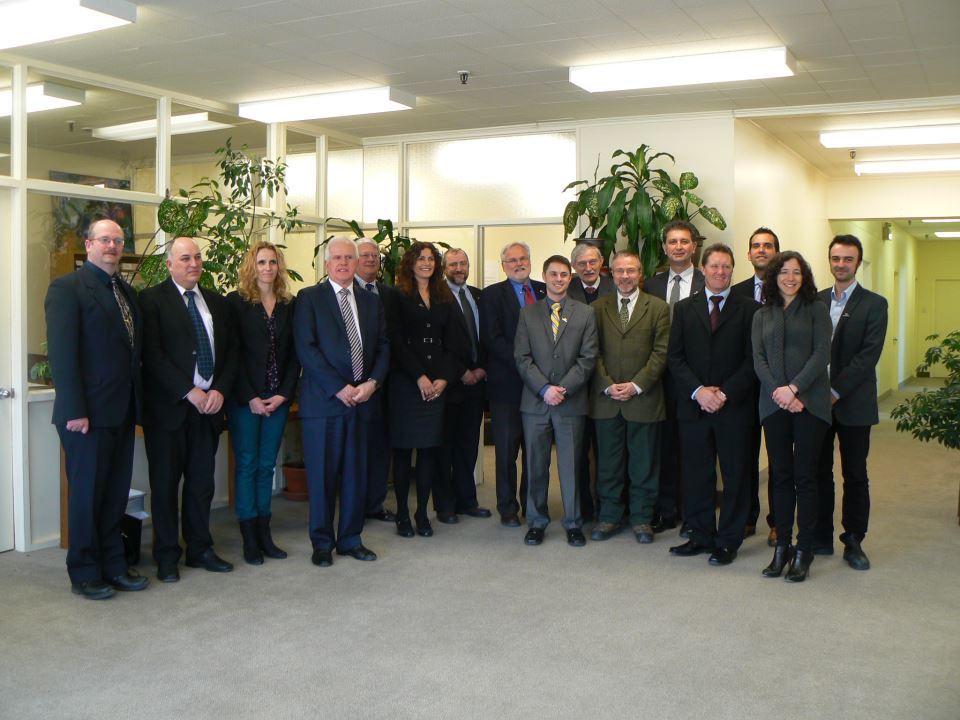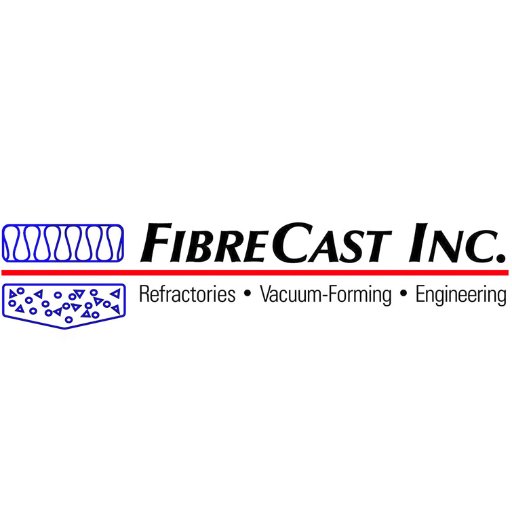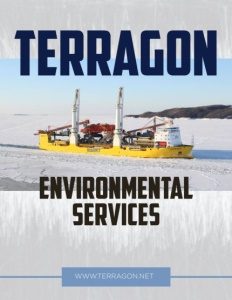Business View Magazine interviews Andrew Korney of Terragon Environmental Technologies, as part of our focus on sustainable energy businesses in Canada.
As a society, we are ingrained with certain habits and frames of mind. When it comes to waste, both solid and liquid, we generally believe “out of sight – out of mind.” Our solid waste gets bagged or boxed up to be hauled away to a landfill, somewhere, and our wastewater either gets treated by a large municipal facility or, just as often, gets flushed, untreated, back into the environment. Either way, the pervading ethos is that waste is simply something to be gotten rid of – taken away from our own habitats where it’s created and exported to others. Most current waste treatment technologies support this approach.
However, for many communities and habitats, the conventional approach to waste management is not practical. Examples include ships, isolated communities such as offshore oil rigs, remote resorts, mining camps, research stations, and numerous other habitats that, for various reasons, cannot transfer their waste to others. Wouldn’t it be a wonderful thing if the waste products generated in these habitats had a way, not only to be safely disposed of onsite, but also to be transmuted into a useful resource? Terragon Environmental Technologies of Montreal, Canada and its 35 workers believe so, and they have been working precisely toward that goal, since 2004.
“Terragon was founded by Dr. Peter Tsantrizos, who spent his entire life in waste solutions and renewable energies,” says Andrew Korney, Terragons’s Director of Business Development for Marine Applications. “He started Terragon with a different mindset; instead of developing technologies where you would bring waste to one facility to process and recycle, he took a different approach. He wanted to put these unique appliances in the habitats that are creating the waste, to use the waste, or the water, to produce resources, onsite, and enable off-grid sustainability. It’s something we call TRU Habitat – Total Resource Utilization. You move away from the hauling, and transportation, and land-filling – an unsustainable, centralized approach.”
Terragon’s flagship product is called MAGS – the Micro Auto Gasification System. It’s for solid waste, garbage, and sludge oils. “That was the first product we developed,” says Korney, “and, technically, is our only commercialized product at this point. It’s been available commercially for the last three years.” MAGS is the world’s most compact, efficient, and environmentally safe technology for the conversion of any combustible, organic materials into thermal energy for use by the site where the materials are generated. Waste streams that can easily be converted into energy by MAGS, without the need for segregation, include, but are not limited to, paper/cardboard, plastics, food, oily rags, oils, and sludges.
MAGS’ patented technology breaks down hydrocarbons in waste, and transforms them into a small volume of residue, called bio-char, which is safe for use as soil amendment, and a gas consisting mostly of hydrogen and carbon monoxide (syngas). In Terragon’s proprietary Auto Gasification process, the syngas is combusted under controlled temperature and air flow conditions, and then used as the fuel for the process, itself. In other words, the waste is converted to inert carbon products by “cooking it” and the vapors generated from the “cooking” become the fuel for the whole process. This renders the appliance virtually self-sustainable.
Terragon’s second product is called WETT – Wastewater Electrochemical Treatment Technology. “WETT is still in the late stages of R & D,” says Korney. “We expect the first products under WETT to be ready by the end of this year. That’s going to be for oily, contaminated water (WETT-O); but there’s also going to be a WETT for greywater (WETT-G), and one for black water or sewage (WETT-S). Those are probably about two to three years out.”
The leading sector for Terragon’s market penetration for WETT is the maritime industry. Not only are ships isolated habitats that can’t haul their waste to others, but the regulations for the shipping and offshore industries, which can include both commercial ships and cruise lines, as well as oil and gas rigs, are particularly stringent when it comes to the disposal of waste and wastewater at sea. Thus, waste management on ships and sea platforms remains a serious operational challenge characterized by excessive costs and potential health and environmental risks. It is often complex, inefficient, and labor-intensive. Terragon’s WETT system offers an innovative and easy way to implement solutions for ships and sea platforms for their waste water, greywater, sewage, and oily bilge water.
All WETT systems consist of one or more modular units based on electrochemistry, supplemented by pre-treatment and post-treatment units, depending on the type of wastewater being treated. Central to all WETT systems is a marinized Electrocoagulation (EC) unit which has been perfected over the years to overcome the difficulties that are common to many simple EC units available commercially. In addition, there is the Electrochemical Oxidation (EO) unit for highly concentrated wastewater or for the removal of dissolved organics; the Oxidant Decomposition (OD) unit to reduce any residual oxidant content; the Bead Filter (BF) unit to remove all traces of residual turbidity; and several separators for the removal of large suspended solids, free oil, and/or residual organics.
So far, MAGS systems have been deployed mainly in large and/or remote habitats – ships at sea, military bases, research camps, etc.; and WETT systems have only been experimented with in a few residential settings, and onboard vessels. But once MAGS systems are scaled down to fit in residential units, and WETT systems can be scaled up for different applications, such as ships or apartment buildings, Korney believes that Terragon’s macro vision can be realized. “When you combine the two technologies together, that’s the TRU Habitat,” he declares. “When you’ve employed MAGS and WETT systems together, there’s a lot of synergy between the two. MAGS generates a bit of water in the process that can go to WETT, and WETT generates a small amount of sludge from these wastewaters that can be gasified by MAGS into energy. When you put these two applications into whatever habitat, it truly can make it off-grid – being left with energy and clean water (non-potable) for reuse.”
“There’s a way to move away from the grid and do it simply and economically,” Korney adds. “You don’t need to put this bag of garbage on your street to be picked up; you can actually use it to harvest energy for your home. Or you can put this technology in your basement that’s going to clean your wastewater stream that can be used for irrigation or to flush your toilets again. But, this mentality that’s been built in by the traditional processes – hauling garbage away, turning the faucet on and off – is ingrained in us. That’s the hardest part – getting people to try something new. That’s the real challenge.”
At Terragon Environmental Technologies, the prevailing ethos is that that challenge will be met with continuous perfection and commercialization of its revolutionary technologies, systems, and products. “From our point of view, we don’t consider the word waste,” says Korney. “We see it as a way to generate more resources. And there is a growing interest to look at waste this way.”
AT A GLANCE
WHO: Terragon Environmental Technologies
WHAT: A manufacturer of products for onsite management of solid and liquid waste
WHERE: Montreal, Quebec
WEBSITE: www.terragon.net




